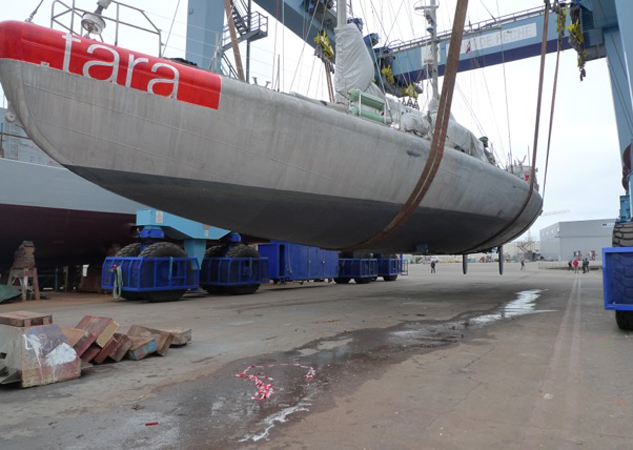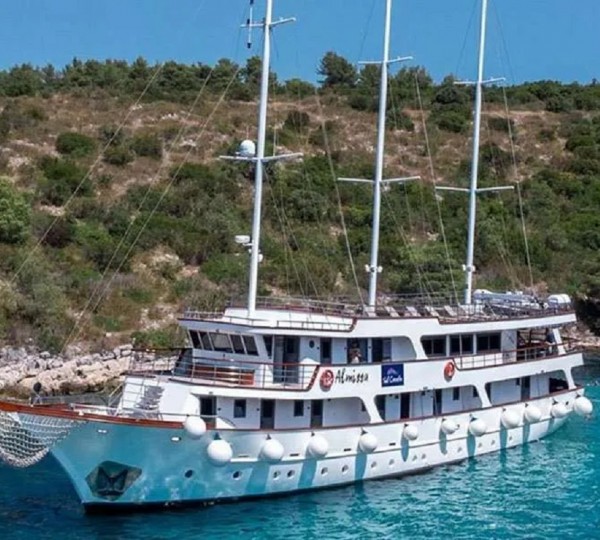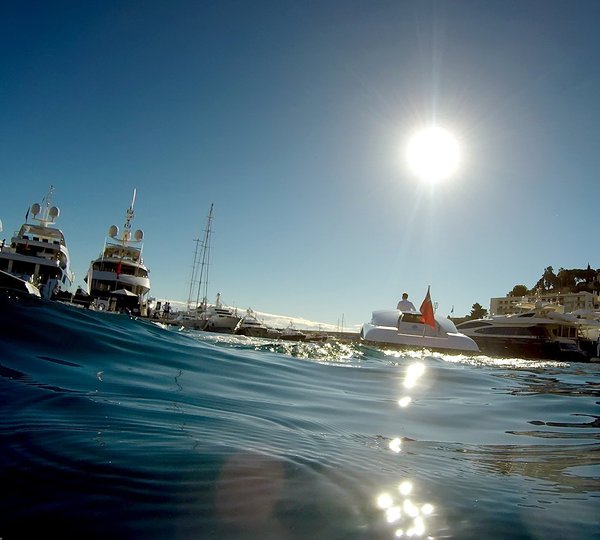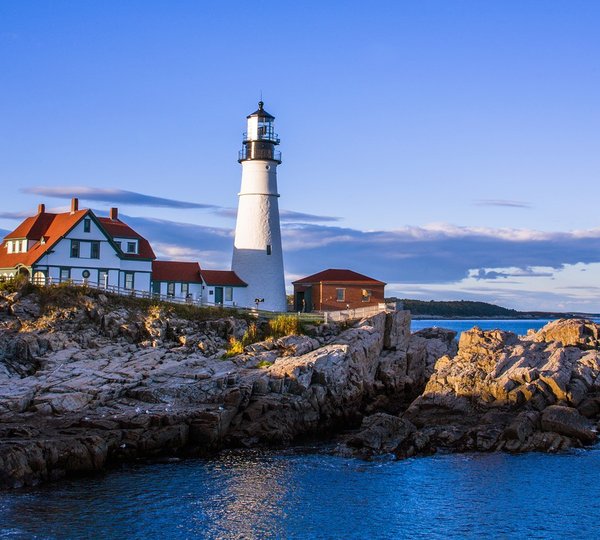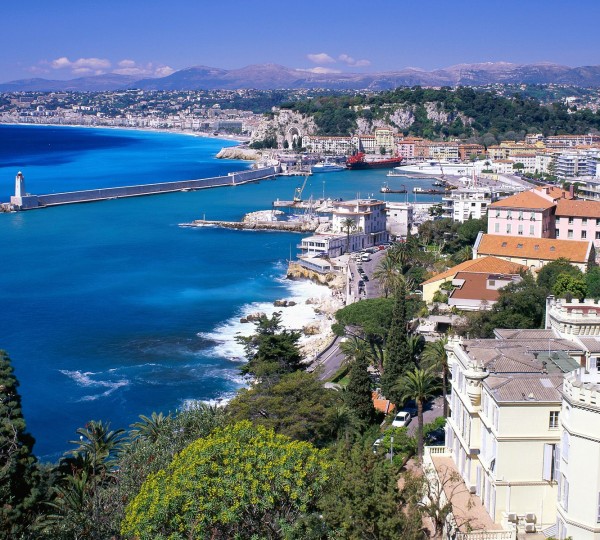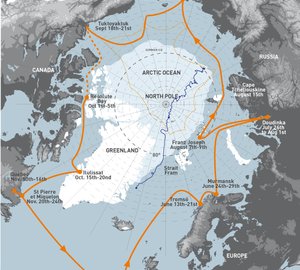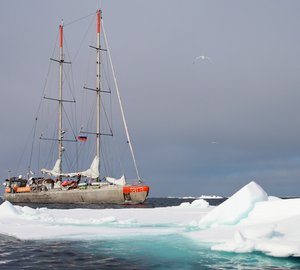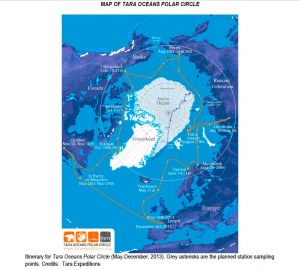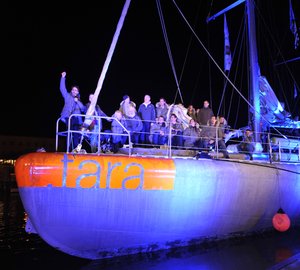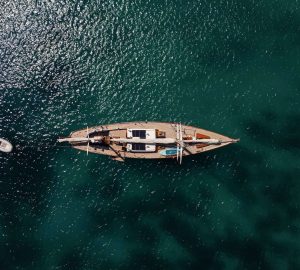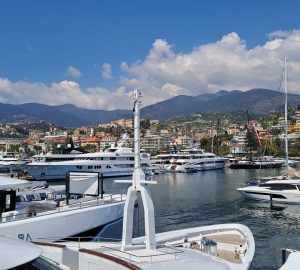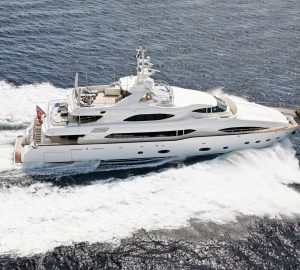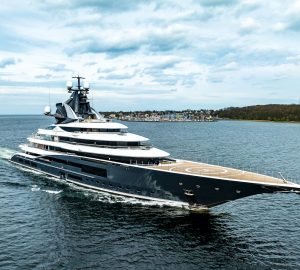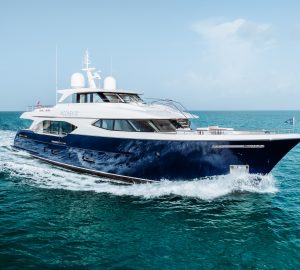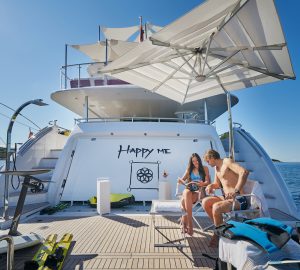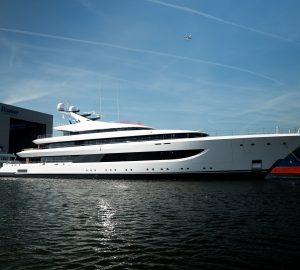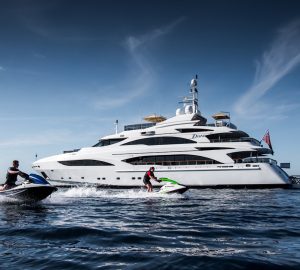This month will see sailing yacht Tara circumnavigate the Arctic Ocean via the Northeast and Northwest passages, representing a scientific and academic adventure covering 25,000 kms and lasting 6 months. This international expedition will be in partnership with countries bordering the Arctic Ocean as well as in association with the Prince Albert II de Monaco Foundation and agnès b.
THE SCIENCE BEHIND THE EXPEDITION
All the scientists and institutes involved in the Tara Oceans 2009-2012 expedition will participate, along with Canadian & Russian laboratories specializing in Arctic research.
During the Tara Oceans Expedition 2009-2012, only the Arctic Ocean was missing in our effort to collect plankton from all the world’s oceans. There is therefore great interest in comparing biodiversity in the Arctic with other oceanic regions, especially in the context of the major transformations taking place. In fact, the summer of 2012 marked the most extensive Arctic ice melt ever observed.
The Tara Oceans Polar Circle 2013 research will be conducted around the borders of the ice pack where planktonic activity is the most important.
In addition to this global biological approach, oceanographic and chemical analyses specific to the Arctic will be undertaken. The aim is to understand the vulnerability of polar biodiversity in the face of human activity; how melting of the ice pack impacts the polar marine ecosystem and what types of pollution come into play in these remote areas.
Several key factors assure the success of this expedition. The scientific team has been working together since 2009. Their collective expertise and overall ecosystem approach, the availability of existing equipment, and Tara Expeditions’ experience in polar environment logistics are also invaluable assets.
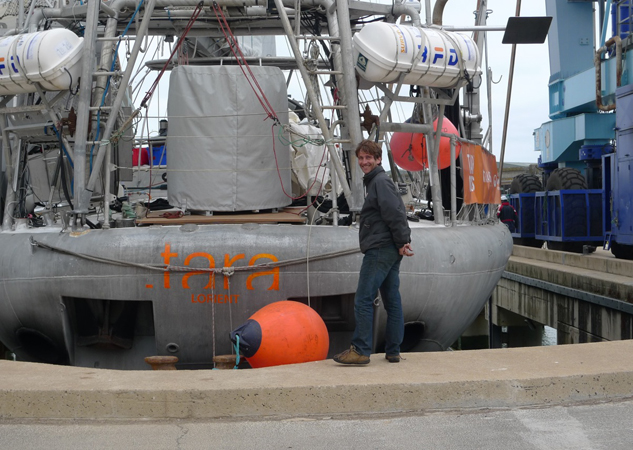
Loic Vallette, Tara Yachts Captain is glad to find Tara back in the water - Photo credit to J. Collet/TaraExpeditions
CONTEXT
This mission will contribute to the international effort to study the Arctic ecosystem before a probable climate change. It will provide baseline data on the ecological status of Arctic waters, and help identify issues concerning the future development of this region.
Tara Expeditions will also use its presence to inform the public, politicians and the business world about the most urgent environmental issues in the Arctic, as well as problems faced by the people who inhabit the Arctic Circle. For some, the opening of maritime routes is an economic asset but for others, this development has an environmental risk. Sustainable development in the Arctic is definitely in question.
PEOPLE
Etienne Bourgois, President of Tara Expeditions
Roman Troublé, General Secretary of Tara Expeditions
Loïc Valette, Captain of Tara and the crew
Scientific Directors:
Chris Bowler, Spokesman(CNRS / ENS)
Eric Karsenti (EMBL / CNRS)
Gaby Gorsky (CNRS)
Marcel Babin (U LAVAL, CNRS)
Colomban de Vargas (CNRS / UPMC)
Emmanuel Boss (U of Maine)
Jean-Claude Gascard (CNRS)
Scientific coordinators of Tara Oceans
Stefanie Kandels-Lewis, Logistics (EMBL)
ONBOARD SCIENTIFIC EQUIPMENT
– Plankton nets
– Special net for collecting surface plastic
– CTD rosette (pressure, temperature, conductivity, nitrogen, oxygen, fluorescence, optical properties of water)
– FlowCAM to count and characterize plankton
– Flow Cytobot (underwater) to count and characterize plankton
– UVP (Underwater Video Profiler) to characterize zooplankton, large particles and their vertical distribution
– AC-s spectrophotometer for continuous pigment and particle distribution measurement at the ocean’s surface (coordinated with satellite ocean color imaging)
– Retrodiffusion device to characterize surface material (linked with ocean color satellite)
– Cytofluorimeter able to determine small groups of organisms by size and fluorescence
– Spectrofluorimeter ALFA capable of continuous measurement of fluorescent organisms at the ocean’s surface
– UltraPath spectrophotometer able to characterize optical properties of dissolved material
– PAR radiometer, measuring the luminescence of photosynthesis
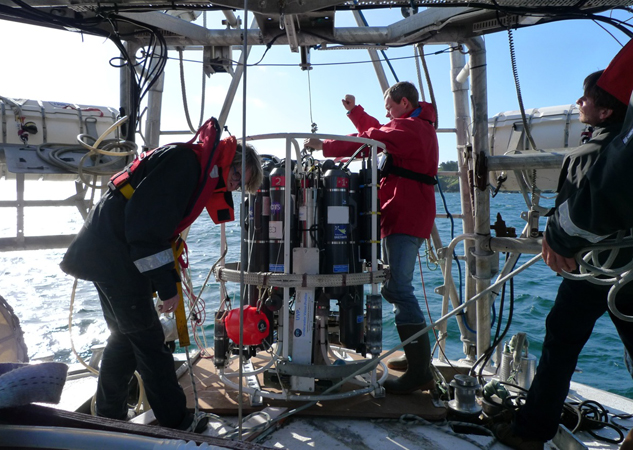
Expedition yacht Tara is back at sea, the scientists are testing the CTD device - Photo credit to J. Collet/TaraExpeditions
THE OUTREACH PROGRAM
– A journalist will be constantly on board Tara yacht to cover the expedition via texts, video and photos for the internet and social networks.
– Media partnerships
– Tara Journal at the end of the expedition
– Production of TV programs
– Tara Junior educational program
SCIENTIFIC PROGRAM
Tara Oceans Expedition global approach. Its goal is to compare the plankton and physico-chemistry of the Arctic with data collected in other oceans during the Tara Oceans expedition (2009-2012):
– Study of drifting plastic and air pollutants in the Arctic
– Study of ocean color, composition and pigments of surface particles for NASA by the University of Maine, USA
– Study of spring plankton blooms at the edge of the ice pack, conducted by the Université Laval, Quebec
– Collaboration with the Shirshov Institute of Oceanology (Moscow) and the Russian Arctic National Park
ARCTIC CONDITIONS
As of today, only 2 sailboats have circumnavigated the Arctic Ocean.
Several types of risks can be identified: natural and technical. Natural hazards include the unpredictable weather, and the formidable presence of ice. Although the period of thaw gets longer almost every year, the window of passage (before the ice closes in again) is short and doesn’t leave much room for the unexpected. Temperatures will be between -10°C and +5°C when expedition yacht Tara sails beyond the Arctic Circle from July to October. Daylight will predominate in the Russian Arctic, and will gradually turn into clear nights lasting 12 hours starting late August. Tara will undergo some adaptations to protect the workspaces and scientific equipment from the cold.
PARTNERS
agnès b. Foundation
Prince Albert II of Monaco Foundation
City of Lorient
CNRS
EMBL
GENOSCOPE
TAKUVIK (LAVAL & CNRS)
SHIRSHOV
NASA and the OCEAN consortium laboratories
Under the High Patronage of François HOLLANDE, President of France.
Below is an amazing video made on board Tara yacht, released by Tara Expeditions in February 2013.

